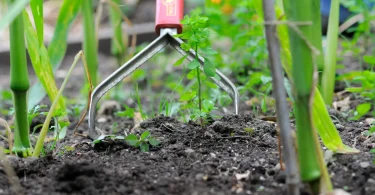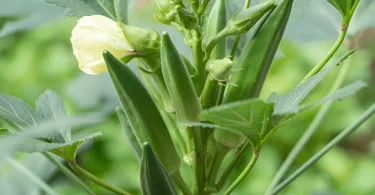Mint is an herbaceous plant of the genus Mentha that entails roughly twenty-five species. It has been attributed to having a stimulating fragrance, being suitable for cooking purposes, having healing benefits, or even for controlling pests. In this article, we will explore various mint plant varieties with their features, applications, and growing requirements.
Types of Mint Plant
Mint Plant has approximately 25 species in the world. The details of some species are:
1. Peppermint (Mentha)
Description:
Peppermint is a natural hybrid of a water mint and a spearmint plant, which belongs to the mint family. It is recognized by its dark green leaves with bright red veins and a primary menthol fragrance.

Uses:
This is particularly due to its use in culinary purposes including, teas, desserts, and candies among others. Its essential oil is used in aromatherapy, toothpaste, and muscle disorder products.
Cultivation:
Peppermint prefers moist, well-drained soil and partial shade. But, it can be invasive, and therefore, it is best to grow it in a container.
2. Spearmint (Mentha spicata)
Description:
It closely resembles peppermint, has pointed leaves that are bright green, and has a somewhat less potent, sweet scent. It blooms in the summer and yields aerial blossoms in lilac or pink color.

Uses:
Known to be a culinary herb, spearmint is used in the preparation of popular creations such as mojito and mint julep. It also has its use in salads and sauces and it is used also as a garnish.
Cultivation:
The plant grows well in regions that receive full sun to partial shade and in well-drained soils. As a weed, it can also grow unnaturally and therefore best controlled.
3. Apple Mint (Mentha suaveolens)
Description:
Apple mint is also called woolly mint and has more round leaves than the former the leaves are fuzzy and have a fruity smell, resembling apples. This variety can reach a height of 3 feet and blooms from white or light pink blossoms.
Uses:
Apple mint is good in fruit salad, jelly, and tea. Due to the smell, it is commonly used in potpourri and homemade cosmetics.
Cultivation:
This plant grows best in an area that receives full sun to partial shade in moist but well-drained soil. Pruning is done on time to maintain the dense and miniature size of the plant to improve its growth.
4. Chocolate Mint (Mentha × piperita f. citrata ‘Chocolate’)
Description:
Chocolate mint is similar to peppermint but produces a chocolate fragrance. It has small, dark green, narrowly ovate leaves with a tinge of purple and a sweet mint chocolate scent.
Uses:
An excellent accent for desserts, beverages, and baked goods, chocolate mint is a distinct and engaging taste. It is also applied in teas as well as in making aromatic oils.
Cultivation:
Like other mints, it is a cold-tolerant plant that thrives in partial shade and moist soil. Contain its growth to reduce its possible rapid dissemination.
5. Corsican mint (Mentha requienii)
Description:
Corsican mint is a low-growing, prostrate beneficial plant with small, shiny green leaves. It has a powerful and distinct smell of peppermint and bears small purple flowers.
Uses:
Due to its strong fragrance, it can be used for potpourri purposes, for making teas, or for adding to Crème de Menthe liqueurs. It is also used as ground cover in gardens and between pavers.
Cultivation:
This mint grows best in partial shade conditions, while the soil should be moist, well-drained, and humus-rich. It is best suited for rock gardens and planting below other plants that are much taller than it.
6. Pineapple Mint (Mentha suaveolens ‘Variegata’)
Description:
Pineapple mint is a kind of apple mint that is green with cream-colored leaves, and yellow-green with a pineapple-like scent. It is an aquatic plant that can grow up to 2 feet tall and bears small white or pink flowers.

Uses:
Pineapple mint can garnish fruits and teas and is also perfect for fruit salads. It is widely used as an ornamental plant since its leaves are also used for decorating.
Cultivation:
It prefers to grow in a warm climate with full to partial sun exposure and moisture-retentive, well-drained soil. This makes the plant not develop long and airy branches and makes it bush out.
7. Ginger Mint (Mentha × gracilis)
Description:
Another type, ginger mint, or slender mint, has green leaves with bright yellow midline and has a ginger-like smell. It can maximally reach 2 feet in height and produces small flowers of pale purple color.
Uses:
Subtle ginger and mint infusion set it apart from other spirits and it pairs well with strong brewed teas, cocktails, and foods that need a boost of both flavors. This is also used in aromatherapy as well.
Cultivation:
Ginger mint mainly thrives in an area of full sunlight to partial shade about soil moisture, the plant grows well with rich, moist, well-drained soil. Restraining its expansion is reasonable because the plant is invasive.
8. Horsemint (Mentha longifolia)
Description:
Horsemint or wild mint has long, narrow leaves and is known to have a strong mint-like scent. It has small lilac-like flowers and can grow up to 3 feet.
Uses:
Horsemint was used traditionally for many purposes and now it can be used in teas and a natural inert repellent. Due to its potency, it compels away bugs such as mosquitoes and flies.
Cultivation:
This mint grows well in the full sun to part shade and needs soil with good drainage and moisture. It is rather more drought-resistant as compared to the other types of mint plants.
9. Water Mint (Mentha aquatica)
Description:
The plant is popularly known as water mint, which suggests that it thrives in aquatic environments such as the fringes of ponds or streams. It tolerates round toothy leaves and bears purple flowers in groups.

Uses:
Water mint is mostly utilized in preparing concoctions, including tea and herbal medications. Due to its strong smell, it serves as an excellent insect repellent when used in moderate proportions.
Cultivation:
They must be planted in full sun to partial shade areas, and the soil must be constantly moist. This plant type is suitable for growing in water gardens or bog gardens where water is allowed to drain slowly.
10. Orange mint (mentha × piperita citrata)
Description:
Orange mint or bergamot mint has dark green leaves with a citrus bergamot aroma related to the plant. It bears tiny, lilac-colored flowers in summer.
Uses:
The citrusish flavor makes it ideal for use in teas, desserts, and sauces as well as some cooked dishes. It is also utilized in making potpourri as well as aromatherapy.
Cultivation:
Orange mint prefers an open location with partial shade and prefers a soil type that is rich in organic matter and should have good ly drain. It should be trimmed and pruned from time to time so that it can grow at the right time and without interfering with nearby structures or plants.

Propagation and Maintenance of Mint
Soil and Light:
Most of the mint species require moist, well-drained soil and a half-shaded place. Nonetheless, it is necessary to remember that they can withstand direct sunlight as long as they are properly watered.
Watering:
It should be watered from time to time particularly when the weather is too hot. Keep the soil always moist and do not let it become waterlogged.
Pruning:
It is also important that mint plants should be pruned frequently so that they do not get stretched out and develop more foliage on their stems. The tips should be pinched back often and all flowers should be pruned to keep the plant growing bushy.
Containment:
The mint plant is considered by many gardeners as uncontrollable due to its rampant growth. The best way to fight horseradish is to prevent it from taking root which can be done by planting in containers or, making borders around your garden beds.
Propagation:
Mint is fairly easy to propagate through the stem cuttings. Using a stem cutting, put the cutting in water until it starts to produce roots and transplant it to the soil.

Conclusion
Mint plants are fascinating not only as plants in a garden but also in the kitchen. Because of the interesting aromas of their fresh leaves and the many uses and several tastes of them, they are invaluably important. If your interest is food preparation, adding that finishing mint touch to your soups or sauces, or even brewing your herbal teas, or simply adding aroma to your home, then there is always a type of mint for each of these uses. Indeed, if well tended and attended to, these herbs will give maximum returns as they are used in many aspects of human life.



